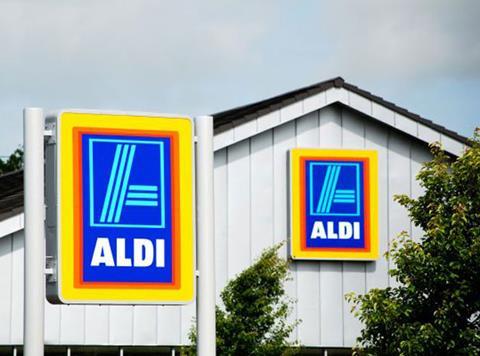
Aldi announced another set of record results this morning, with sales up 11.8% to £7.7bn as it continued to expand across the UK and give the traditional big four supermarkets a headache. The discounter is also planning to invest a further £300m in its stores over the next year. However, its bottom line has suffered as the price war continued to rage, with operating profits down 1.8% to £255.6m in 2015 as it slashed the prices of 30% of its products.
Here is what analysts from HSBC and Bernstein had to say about the 2015 figures:
David McCarthy at HSBC said: “Aldi results contain little surprise. Sales growth continues at pace with c12% added in the last year, and sales doubled in the last three years. But operating profits are down c2%, leading to a 50 basis points (bps) fall in the operating margin, which is now down c180bps in two years as Aldi responds to increased price competition, primarily by Tesco, which continues its long-term price reposition.”
He added that Aldi’s challenge is improving the stores to continue to convert customers. “Aldi’s price position is well understood by most consumers, so winning more LFL market share by claiming to be cheapest will not yield much more growth. Hence the move to bigger and better stores and more emphasis on quality and value added ranges. However, this move is not without risks. Costs and wastage will rise and there will be the challenge of fitting an increased range into a finite space, particularly for older stores.”
He concludes that the rise of the discounters may be facing more hurdles than ever before.
“Discounters not having it all their own way. On the figures released today, it seems that Aldi is feeling some pressure from increased price competition by the big four. Lidl recently saw its UK CEO depart, with the press suggesting this may be due to weak performances at Lidl. Our view is that the discounters were allowed to grow unencumbered 2009-14, but are now facing much tougher competition, particularly around base pricing as the big four move away from multi-buys.”
Bruno Monteyne at Bernstein was also fairly bearish on the difficulties facing Aldi (and Lidl) as margins dropped 50 basis points to 3.3% in 2015.
“Falling margin suggests that Aldi’s ‘exit rate’ margin (i.e. margin in second half of 2015) likely fell to closer to 3%. Aldi cite margin investment to maintain price leadership as the reason for the declining margins. In past years, Aldi changed the nature of its operating profit (e.g. taking back leases), which masked true drop in profitability. We won’t know the full drop in profitability until we have visibility into Aldi’s full accounts on Companies House.”
Monteyne added that the market share data from Kantar Worldpanel is not the most reliable for examining Aldi’s growth, with like-for-like shares at the discounter likely to be negative last year.
“Sales grew by 11.9% in 2015, 4% slower than Kantar’s suggested growth of 15.8%. Using Kantar isn’t just a bad gauge to estimate supermarket growth, but clearly also discounter growth. Some of the delta may be due to Ireland being included in this number, but Ireland is too small to cause the entire difference. If Kantar overestimates Aldi’s growth, then today’s like-for-like sales would be negative for Aldi.”
The fight back by Tesco has also held Aldi back, with initiatives such as Farm Brands being particularly successful.
“The environment has not got any easier for Aldi in 2016, especially with the launch of Tesco’s Farm Brands and lower growth. Aldi has lowered prices on 30% of its products so far in 2016 and as a result it seems likely that Aldi’s margin has dipped even lower,” Monteyne said.
He also raises doubts over the strategy to invest in improving stores because it compromises on the discounter operating model.
“Aldi announces more investment in its portfolio with new format stores including more chill space, baby and toddler range, wines & spirits, food-to-go, new in-store colours, signage and product specific lighting. These are features we would more traditionally associate with a supermarket rather than a discounter, and suggest that they are looking to expand growth by moving away from the pure discounter model. These improvements won’t be cheap and add weight to our argument that margins are likely to fall further during 2016.”







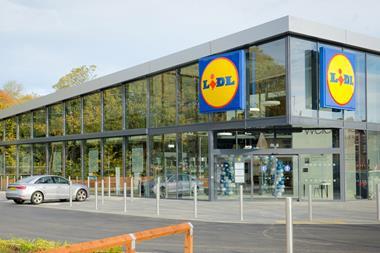
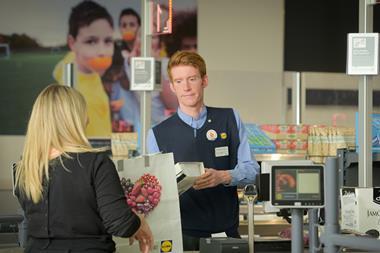
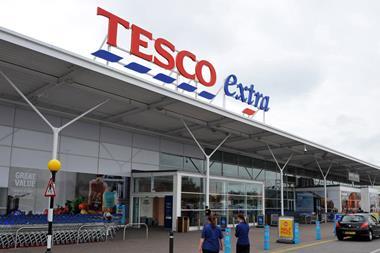

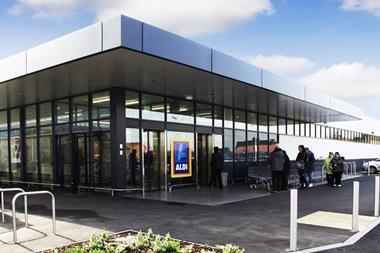
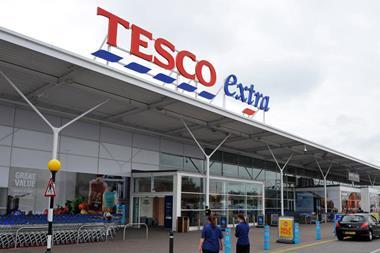






No comments yet